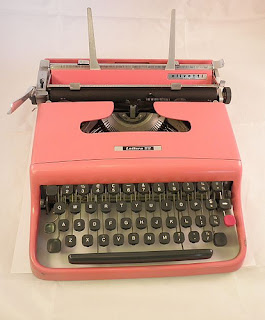Okay, so now I’ve got a blog.
What is a blog? I don’t know. The word doesn’t even feature in my Webster’s Third International Dictionary. It’s a word from the “new” world and I’m still from the “old”. All this new technology frightens me, it looks so complicated, and I sometimes wonder if I’ll ever be able to understand it all. I can’t help wishing I was a child again. Children seem to have a natural ability when it comes to computers, cell phones, e-books and MP3s, to mention only a few of the things on the market these days.
I can remember, almost sixty years ago, learning to type on the old Underwood and Remington typewriters. When you pressed the Shift key the whole carriage would lift up off its resting place to allow you to type a capital letter (a carriage, by the way, is the roller section that holds the paper you’re typing on). On releasing the Shift key the carriage then drops back on to its resting place with a resounding crash that would make your desk shudder. They were great big clanging machines that needed a man’s strength to move them from one place to another when necessary and it’s no wonder the typing pool was always situated at some distance from the offices of the managerial staff.
We were taught “touch-typing”, which means we had to learn to type from a book, or a folder, without looking at our hands. Touch-typing, in other words, had nothing whatsoever to do with a light touch. One needed a certain mettle in ones fingers and wrists to be able to pound those keys hard enough for the little hammers to make contact with the ribbon, which, in turn, would leave the imprint of the letter on the paper.
Typewriter ribbons came on reels and were made of a thin, rather silky material. It would run from the reel on the left to the one on the right, and then back again. Only the top section of the ribbon was used, so when it became too faded to leave a good imprint on the paper, or when it developed little holes (which it sometimes did), one would remove the reels, turn them over so that the unused bottom section would now be on top, and there you go – a brand new, second-hand ribbon. They lasted for ages, much longer than the fancy cartridges of today. Eventually, as the typewriters became fancier and less noisy, we could get ribbons that were black on top and red at the bottom. That made typing financial statements so much easier – when someone was in the red you could type the figures in red.
In 1960 Vernon very kindly bought me a portable Olivetti typewriter – a pink one – and this was my pride and joy for a long time. The keys were just so small and close together that I quite often caught my fingers between the keys if I typed too fast, and so I was constantly nursing raw fingers. It was on the Olivetti that I typed my first few published manuscripts, and with my first Royalty cheque I bought myself a normal sized Facit. From the Facit I finally progressed to an electric typewriter – nothing scary about that – but then came the era of the Word Processor.
I recall being terribly nervous when the word processor was delivered and demonstrated to me. I thought then that I would never be able to understand how it functions, but once I’d calmed down I realised that the manual that came with it gave very simple, step-by-step instructions that helped me through the sticky patches until I was comfortable with this new, modern invention. It was a luxury in the sense that I didn’t have to retype my manuscripts after editing and making changes. The latter was all done on the processor and then it would print it out for me – all I had to do was feed the paper into it at the end of every page. As with most things, there was a down-side to this for me. I was terribly concerned that I would lose some of my work if the word processor should develop a glitch, and as a result I always made sure that I kept a printed copy of everything I wrote. As a matter of fact, I now have a computer and I still don’t trust it not to lose my work somewhere along the way. All this talk of motherboards crashing and goodness knows what else simply scares me silly.
Well, I’ve survived the ordeal, and I’ve walked the road from feeling stupid to coping with all this modern technology. And now I’m back to where I started with this episode.
And so I’ve got a blog. And, I guess, in time to come I’ll wonder why I thought I wouldn’t be able to cope.

Very proud of you and your blogging and writing.
ReplyDelete